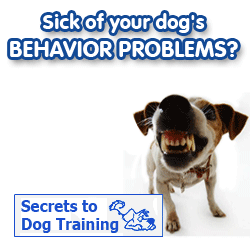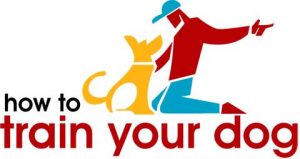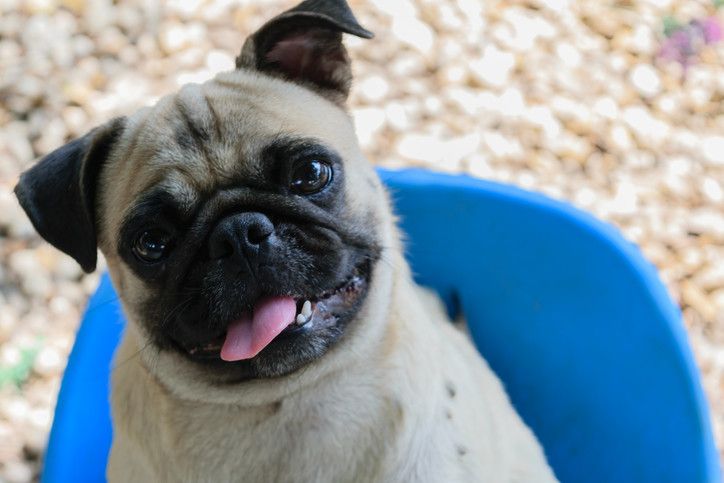Many people keep Pugs in their homes. Due to their adorable appearance and small size, many people love these creatures. However, they tend to have a stubborn nature which poses a challenge for most trainers.
If you are wondering how to train your Pug puppy, then you are the right audience for this article.
This article will provide several methods of Pug puppy training and other things you need to know about Pug puppies.
In essence, understanding how to teach a Pug puppy is an issue of being aware of the Pug`s nature and character. Here are the techniques of Pug training you can apply.
Table of Contents
What is the general rule of Pug puppy training?
While it’s never too late to start training your Pug puppy, you should try to train him when he is still young, preferably within the first six months after birth.
Early training will ensure that your puppy develops desirable habits throughout his lifetime.
If you delay the training, it may soon become difficult to control bad habits such as biting, jumping and barking.
You should be careful to correct these bad manners as soon as possible.
Let your Pug know that you are his commander and make him see what you don’t like.
Use words such as “stop” and “no” to discourage bad manners like snarling and biting.
Just like other dogs, Pugs appreciate good treatments. Be sure to reward your Pug puppy at the opportune moment, for instance, when he obeys your teachings.
Also, you need to know that pugs hate punishments; you should be careful not to yell at him lest he gets scared.
How to potty train a Pug puppy
Depending on the precise nature and character of your puppy, potty training may or may not be able to be used as an effective technique. Even so, it is best if you give this method a try before giving up. After all, potty training is a slow process that can take up to six months or less depending on the learning speed of your Pug and your personal effort.
Here is how to potty train a Pug puppy:
1. Start by buying a properly sized crate for your puppy.
In essence, your crate should be large enough to allow your puppy to stand, sit, turn and even lie down.
Here, the idea is that most Pug puppies do not like eliminating their wastes within their living space, so if you provide a crate that is too large, you may encourage your puppy to turn the extra space to a toilet.
If you want to potty train your Pug puppy, be sure to purchase a small sized crate for him.
Alternatively, if you have a large crate, you can use a divider wall to create usable space in the crate suitable for the puppy`s size.
2. Be sure to attend to your dog after at least three to four times a day, preferably after every meal. It is also imperative to note that pug puppies tend to go out more frequently. Thus, you should take your puppy out after every few hours.
For instance, a two-month-old Pug should go out after every three to four hours while a four-month-old should be taken to go potty after every five hours.
3. If you are potty training your puppy, be sure to watch for signs of potting.
For instance, you can place your pug in the crate as you go about your chores. If you hear him whining, you should help him out.
Use a leash to lead your Pug out and let him identify his suitable position.
Be sure to take him to one spot every day lest he gets confused.
Allowing him to identify his favorite place will make the learning simple and efficient. Remember to reward your puppy with a small treat if he learns this technique correctly.
Give him a tap on his head and toss him a chew as a gesture for the good work.
4. The success of potty training will also depend on how frequent you will repeat these steps.
Repeat the steps daily and try to keep your pug in the crate for shorter periods.
If you do these steps consistently and repeatedly, your pug will soon learn the routine.
In fact, he will be going out knowing that you have a reward in store for him.
5. If you decide to let your pug loose in the house during potty training, be sure to watch him out for signs of going out lest he goes potty in your room.
If you see him sniffing around or showing other signs that he wants to go out, take him out immediately to his designated position.
Be patient as he identifies his spot and remember to praise him with sweet words such as “good girl” or “good boy” if he completes the technique correctly.
6. In the case of accidents, be careful not punish your Pug because he may not associate the punishment with the behavior; clean the mess using an odor eliminator.
However, if you find your Pug in the act of eliminating in the house, use sharp words such “bad manners” and “no”
Take the Pug out immediately and let him finish the exercise. Saying “bad manners” and “no” will cause him to stop eliminating in the house.
House Training
While most people may view house training Pug puppies as difficult, the truth is that it can deliver good results if done consistently and repeatedly.
Proper potty training requires you to watch your puppy’s behavior closely. Be prepared to handle small accidents if they occur.
Train your puppy to sit, stay
Here is how to teach a puppy to sit and stay;

1. When training your Pug puppy, be sure to train in a place that has as few distractions as possible, preferably inside your living room.
Start the teaching with simple commands such as sit-stay technique.
Also, ensure he/she has taken a meal before the training, or he will get hungry and feel bored.
2. Command your puppy to “sit” using an authoritative.
Once his back makes contact with the ground, command him to “stay”.
3. If your puppy learns your commands, offer him some treats, preferably a piece of kibble.
4. After about 30 seconds, release your puppy using commands like “okay.”
Give him more treats.
5. Repeat this exercise as many times as possible but try to make the training sessions as short as possible or your Pug will get bored.
Monitor his success rate and once he has attained a sit-stay 80 percent of the time, increase the delays between the treats by a few more moments.
Repeat the procedure every day until your dog can sit-stay on his own when you command him to.
If you are training your pug in your house, you will need a nice pug dog bed for your pug to sit, stay and sleep.
Behavioral problems
Pug behavioral problems may include aggression, growling, jumping, whining, chewing and barking.
Most of these issues are associated with separation anxiety. If you keep a Pug puppy in your home, you might want to train him to stop these habits.

As a responsible Pug owner, you must avoid anything that may trigger such bad manners.
For instance, you should ensure that your pug is not abused in any way lest he starts showing signs of aggression such as snarling, biting and growling.
Avoid separating your Pug puppy from his mother until he is eight weeks old or more.
Also, avoid physical abuses and harsh punishment which may trigger violent behavior.
Temperament
The good things about Pugs are that they are peaceful, lovable, calm, dignified, and love to play with family members.
Pugs are also friendly and tolerant of other dogs and animals though they can be jealous of other pets coming close to you. They are like children and always love your company.
Health problems
Like other dogs, Pugs may experience various health issues such as skin problems, eye problems, breathing problems, tail problems and brain problems.
Here is a more detailed explanation of some of the most common Pug health problems.
1. Most Pugs are susceptible to skin problems caused by hormonal imbalance, parasitic infections, and weak immune system.
Here, your Pug may experience skin problems such as Pyoderma, which is caused by bacterial infections.
To know if your dog has Pyoderma, watch out for symptoms such as pus-filled pimples and red bumps.
Other skin ailments may include ringworms and Atopy – skin allergy that is characterized by itching and scratching. If you see such problems, call your doctor immediately.
2. As you probably already know, Pugs have an extremely narrow and short nasal cavity as a result of their stubbed snouts.
This characteristic makes them very susceptible to breathing problems caused by the accumulation of debris which can block their tracheas.
One of the most frequent breathing problems in Pugs is caused by a Stenotic Nares, which results from the collapse of body tissues.
3. Pug eye problems may include Cataracts, Distichiasis, and Exposure Keratopathy Syndrome.
4. As a dog owner, you also need to know the problems that come with tail ailments like precious Q curl.
This condition may hold moisture which offers a perfect breeding environment for fleas.
5. Pug Dog Encephalitis (PDE) is another devastating condition which may affect your dog.
This condition is usually characterized by drying of brain cells. It tends to affect middle-aged Pug puppies though its symptoms appear much later at about 9 to 18 months. Symptoms of encephalitis such as seizures can be managed with medication.
6. Sleeping problems. Unlike other dogs, the Pug tends to be associated with undesirable sleeping habits such as snoring and making other funny noises.
If your Pug sounds like a lorry when he is sleeping, it’s a good idea to have him examined for health problems. While most people tend to think of Pugs as lazy, the truth is that they do not sleep more than other dog breeds, and they are not lazy at all.
Pug foods
What are best dog foods for Pug puppies?
It is imperative to know what kinds of food to feed your puppy and those to avoid.
If you are worried about what kind of food to feed or not feed your puppy, here is a short guideline to help you make the right choices;
1. Feed quality and lean proteins such as salmon, whitefish, turkey and chicken. You can also feed other fish foods like sardines, duck, and mackerel. These foods contain vital ingredients such as omega three fats which promote healthy growth and development.
2. Feed probiotics and other supplements. These supplements are necessary for keeping the Pug`s bowels free from diarrhea and constipation.
3. Feed fresh foods. Like most dogs, Pugs are sensitive to stale foods. Also, you should know note that most fresh foods are healthier and promote higher nutrient availability, unlike stale foods.
4. Avoid feeding glutens, by-products, and other undefined products. When buying food for your puppy, be sure to read the ingredients in the product. Avoid products that contain glutens and undefined sources.
How long does a pug live?
Depending on how you take care of your puppy, he may live for about 12 to 15 years. However, male pugs can live up to around 12 to 13 years while their female counterparts can live a bit longer.
By now, I suppose you have an idea about how you can train your pug.
If you have any concerns about standard methods such as crate training house training and potty training, be sure to check with the discussed tips.


